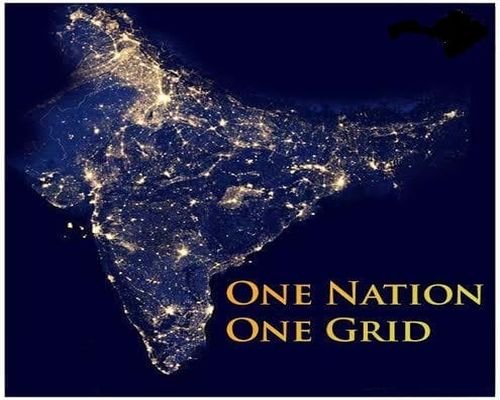The integration of regional grids, and thereby establishment of National Grid, was conceptualised in early nineties.
The integration of regional grids which began with asynchronous HVDC back-to-back inter-regional links facilitating limited exchange of regulated power was subsequently graduated to high capacity synchronous links between the regions.
Synchronization of all regional grids will help in optimal utilization of scarce natural resources by transfer of Power from Resource centric regions to Load centric regions.
Further, this shall pave way for establishment of vibrant Electricity market facilitating trading of power across regions. One Nation One Grid shall synchronously connect all the regional grids and there will be one national frequency.
Evolution of National Grid
- Grid management on regional basis started in sixties.
- Initially, State grids were inter-connected to form regional grid and India was demarcated into 5 regions namely Northern, Eastern, Western, North Eastern and Southern region.
- In October 1991 North Eastern and Eastern grids were connected.
- In March 2003 WR and ER-NER were interconnected .
- August 2006 North and East grids were interconnected thereby 4 regional grids Northern, Eastern, Western and North Eastern grids are synchronously connected forming central grid operating at one frequency.
- On 31st December 2013, Southern Region was connected to Central Grid in Synchronous mode with the commissioning of 765kV Raichur-Solapur Transmission line thereby achieving ‘ONE NATION’-‘ONE GRID’-‘ONE FREQUENCY’.
Speaking at the Government and Business Partnership Conclave at the national capital, organised by the NITI Aayog, CII and the United Nations, the Minister of State for Power and Renewable Energy, Raj Kumar Singh said,”We have a capacity of 345,000 MW today and a peak requirement of 170000MW. 100,000MW has been added by way of renewables in the past 4 years. ‘1 country 1 grid’ has also become a reality which allows us to get power from anywhere and we don’t need generators anymore.”
Reference- Business Standard, PowerGrid website, The Hindu
